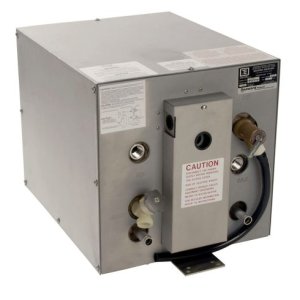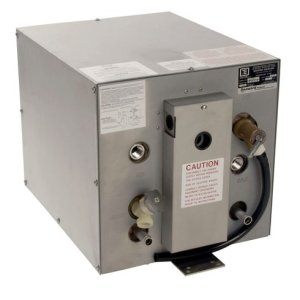Overandunder
Member
Hi all. I recently posted asking a few basic calorifier questions (which is a new feature to me, the used AWB I bought earlier this year has a factory installed one).
I have a lot of documentation for nearly all the boats equipment - but nothing for that unfortunately. Having just emptied the cockpit locker to finally access it - I can't see any manufacturers label to be able to Google very much either.
The unit is much larger than I was expecting - it's roughly the size of a beer barrel. It sits in the corner of the locker formed by the heads bulkhead to one side (no access) and the engine compartment partition (again no access).
The pipework to and from the engine I can access however from the back of the engine - so would that be the only way of draining it ? Perhaps answering my own question !?
Also how should the PRV take off pipe be routed ? At the moment it's attached to a clear piece of pipe just led loosely into the cockpit locker (which doesn't seem right at all).
One last please - should the black rubber pipes to and from the engine that supplies it be insulated - or really no point ?
Thanks for any replies / tips and advice.
I have a lot of documentation for nearly all the boats equipment - but nothing for that unfortunately. Having just emptied the cockpit locker to finally access it - I can't see any manufacturers label to be able to Google very much either.
The unit is much larger than I was expecting - it's roughly the size of a beer barrel. It sits in the corner of the locker formed by the heads bulkhead to one side (no access) and the engine compartment partition (again no access).
The pipework to and from the engine I can access however from the back of the engine - so would that be the only way of draining it ? Perhaps answering my own question !?
Also how should the PRV take off pipe be routed ? At the moment it's attached to a clear piece of pipe just led loosely into the cockpit locker (which doesn't seem right at all).
One last please - should the black rubber pipes to and from the engine that supplies it be insulated - or really no point ?
Thanks for any replies / tips and advice.


